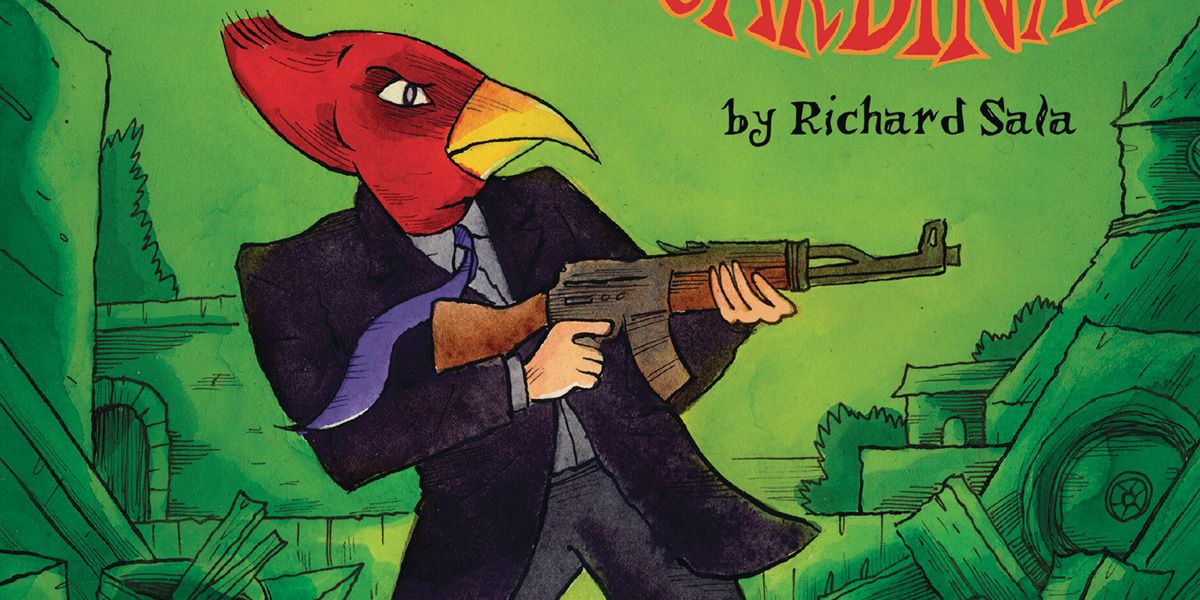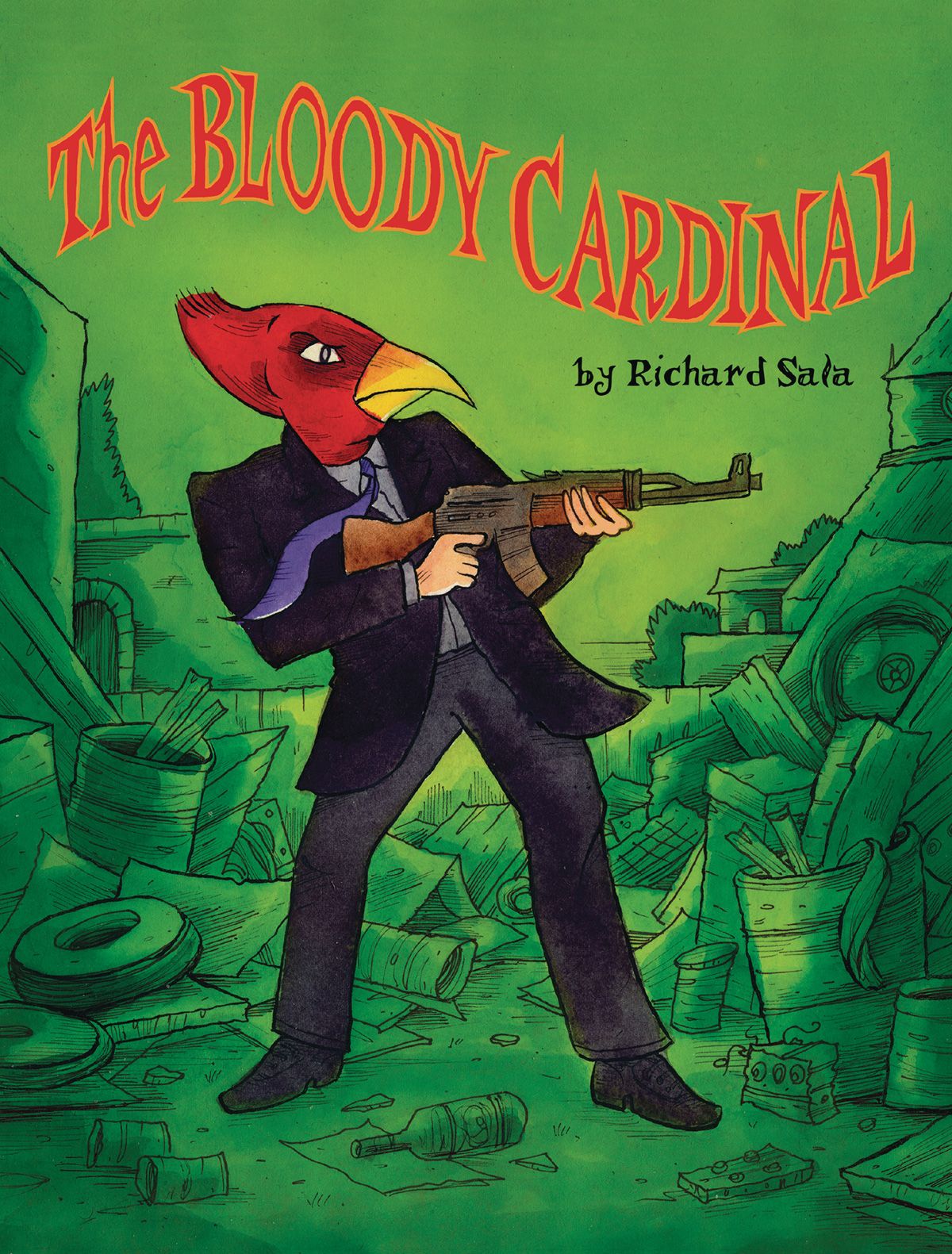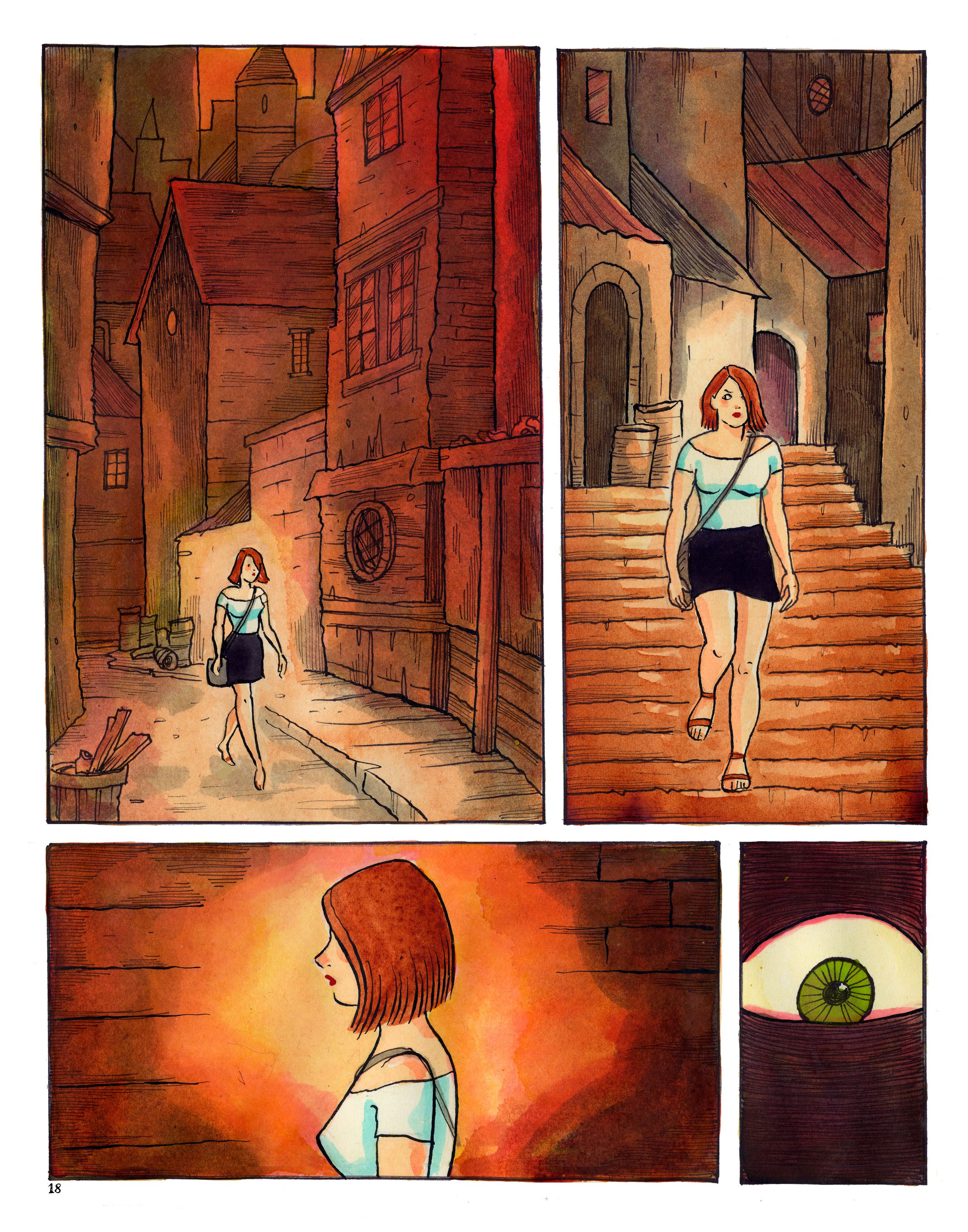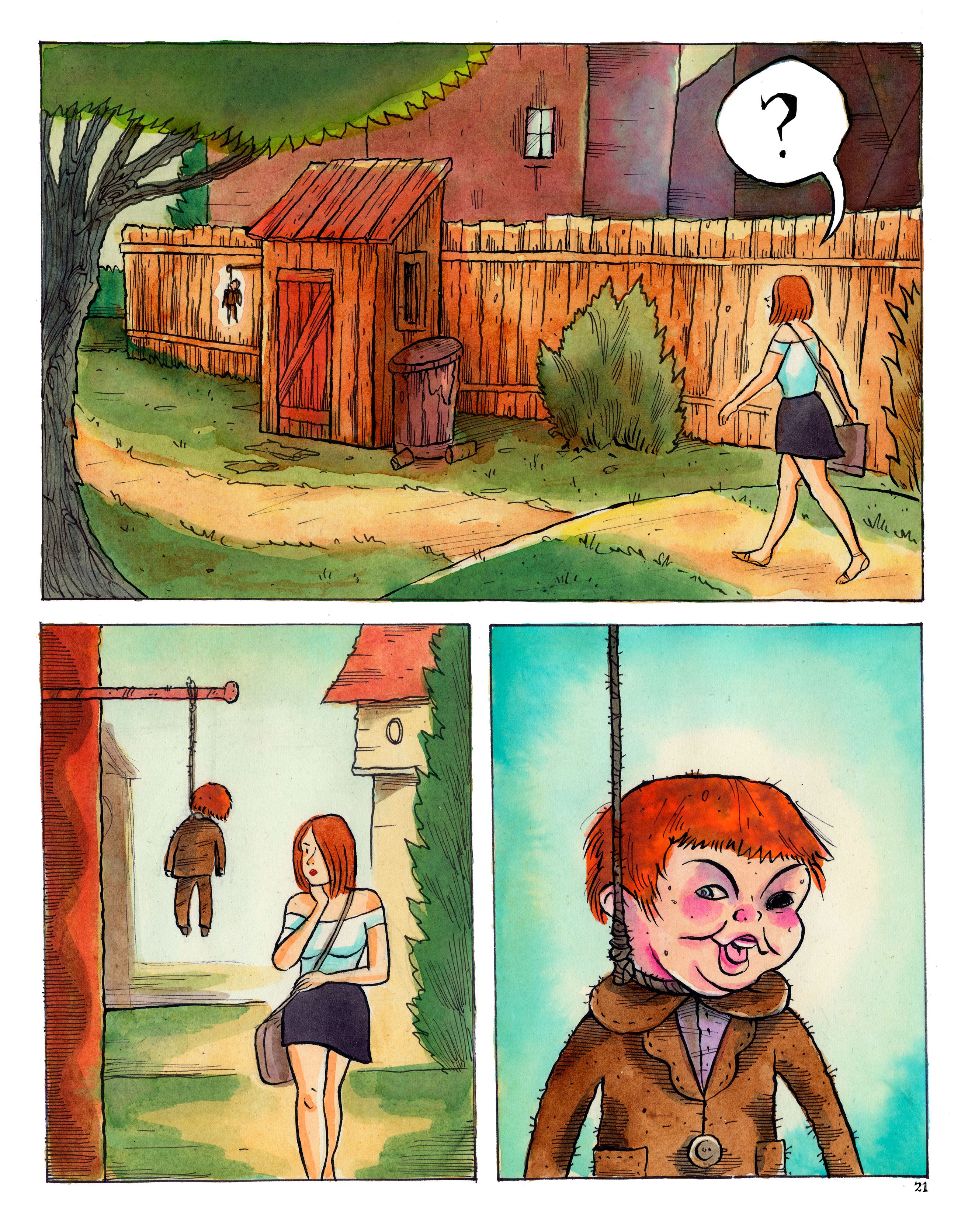Richard Sala has carved out a comfortable niche as the creator of creepy and surreal comics, often with a slyly humorous bent. From Hypnotic Tales to Peculia, Maniac Killer Strikes Again to Violenzia, few cartoonists have established a deeper catalog of original works, and none have delved into the creepy crawlies as consistently and insistently as Sala.
His latest book is The Bloody Cardinal, arriving in stores this week from Fantagraphics Books. In this all-new graphic novel, a series of occult investigators, collectors, and survivors throw themselves into a back-stabbing, bloody quest to obtain the last journal of the deranged cult leader known as The Bloody Cardinal. What secrets does the journal hold? What price must be paid to possess it?
CBR talked to Sala about what makes a fun character to write, how the book’s main character isn’t a person at all, and how deep into The Bloody Cardinal’s sequel he’s already fallen.
CBR: Richard, let’s talk inspirations. The Bloody Cardinal is right in your wheelhouse -- creepy and dark, a little campy. Were there any specific influences weighing on you as you started to turn out these pages?
Richard Sala: At this point I've pretty much absorbed all the things that have inspired me since I was a kid, and it's all just a big bubbling stew inside my head. Old horror movies, pulps, paperback mysteries, European thrillers from the '60s and '70s, spy movies, German Expressionism, old comics, anything strange or absurd or obscure -- they're now so much a part of the work I do that they barely feel like influences and more like being possessed by their ghosts.
Nowadays the direction of a story can be triggered by the most random thing -- like a Topps gum card from the 1960s or an old movie still. Or I walk through libraries and bookstores and pick up random books and flip through them, jotting down notes. I've kept a lot of notebooks over the years so I can come across old notes and suddenly they work with the latest story. I think it adds to the unpredictable or offbeat quality I like in stories. You want thrillers and horror and mysteries to be a bit disorienting and not just follow the predictable paths you see in movie after movie. If the story is boring to me as I go along writing it, month after month, there's a good chance it will be boring to the reader, too. So I like to surprise myself.
The book follows a group of people who are all in pursuit of the last diary of the Bloody Cardinal. Who is the Cardinal and why does everybody want that journal?
I tend to like villains who are over the top but with one foot in the real world -- crazy, grotesque, obsessive super-villains like Fantomas or The Phantom of the Opera or Dr. Moreau or just about anybody who would be played in a movie by Vincent Price or Bela Lugosi. The Bloody Cardinal is someone who started out with the intention of being a costumed vigilante hero, fighting evil, because he was tired of being a victim in life himself. But something snapped. There was a transformation. When you go through the world thinking rules don't apply to you, you've already gone over the edge.
I could say he went all the way over to "the dark side" if that concept wasn't now owned by Star Wars. But let's say he let his inner Mr. Hyde take over and embraced pure evil, committing murder and causing destruction without any apparent reason or goal. However, he still feels like a victim, the one who is hunted and despised. And the only thing he can see as the solution to his problems is destruction. He kept a diary full of mad ramblings and it's important to different people for different reasons.
What is it that draws women in particular to the quest for the Cardinal’s journal? The men are mostly limited to investigating the murders or passively pursuing the journal by watching the women, while Clara, Trini, and Kowka take turns as the story’s nominal lead and take all the risks.
I just like clever and capable women. I mean, women in this world have to learn survival skills early on and have to learn to be shrewd and know how to push back against all the threats that are coming for them. I mean, this is where I'm coming from as a writer. It's a silly generalization, of course. I wouldn't presume to speak for women in real life. As a writer, it's a something inside myself. I like characters who need to find an inner strength to survive, or who can look at things in ways where they'll see things that others don't. Who will bravely persevere with the odds stacked against them. Those are just fun characters to write.
One of the things that I found most interesting is that there is no true protagonist in The Bloody Cardinal. Characters meet grisly fates with rapidity, the journal is misplaced or changes hands frequently, and the book itself becomes more about the mystery than any of the players. Was that lack of a “hero” a specific thing you set out to achieve?
The intention was for the shadow of The Bloody Cardinal to fall over all the proceedings and characters. His diary can be seen as a stand-in for him. It's existence is tied to his existence, in ways that may not be easily explained rationally. At one point one character warns another that those who get too fascinated with the Cardinal may become a part of his story. His evil is like a force of nature and you might get drawn into his orbit. So in a way, the main character of the book is the whirlpool of chaos that's caused by the existence of the diary and that pulls all the characters in.
In addition to your traditional comics pages, you mixed storytelling techniques a few times -- black & white imagery to accompany the Bloody Cardinal’s poetry/diary pages, and a page of Clara’s study of the Cardinal styled as prose on yellowed paper. How much of the fun of making your comics comes from finding places to experiment and expand your creative palette?
The quality of comics now -- how they can be created and presented -- is really inspiring. The level of talent in younger creators and the sophistication of modern readers who want to see people try new things reminds me of what happened in film in the 1960s and 1970s -- just this explosion of creators trying new things and the audiences following along. There's still the old tried-and-true mainstream stuff of course, but I like the "art house" world of comics where -- to follow the movie analogy -- you might go to see a film that is pure art with no narrative and the next day see a film that's a totally offbeat take on a familiar genre and the next day a documentary or an absurd comedy.
You'd have to be the least imaginative person in the world to look at the variety of independent comics right now and not see the potential and the opportunity to do whatever you want to do. The desire to make comics seems really strong in a lot of talented people -- it's just the practical side of getting them out there and getting them seen that's tricky. But with the internet at least that's possible when it wasn't always easy before.
The comics industry has changed so much since you started in it. Back then, you published most of your stories in a standard pamphlet comic format, such as your Evil Eye series. These days, your work is more likely to be serialized online before getting a book form. For a creator on your level of commercial success, have there been substantial drawbacks or benefits to this publishing shift?
Times change. Formats and technology change. There is no going back. If you want to be a creator, you find a way to create and get your work out there. You keep working, in spite of changes in the world and in your life. Do I miss doing pamphlet format comics? Sure. But back when I did those, the stores often wouldn't carry alternative comics or if they did they'd put them in the porno section whether they were porn or not. Now it's pretty easy to get your work out there -- as long as you have money to buy a computer, of course. You draw a picture and put it on Tumblr or Instagram and it's out there. Every artist can have their own gallery, their own portfolio or their own comic book on the web. And if you're good and keep at it, hopefully you'll get noticed.
In the past my work was always been a bit of a challenge explain or sell. What is it? Is it horror? Is it humor? People who walked into comic book stores were looking for something pretty specific -- superheroes or crime comics or whatever. I think being able to suddenly have my whole body of work visible on the internet makes it clearer for people to see what I've always been doing. I don't actually know how to describe that myself! But when you see it all together it kind of makes sense, I hope.
I see that The Bloody Cardinal 2 is running on your Tumblr page. What else is in the works?
I love to do watercolor drawings, so I do a lot of those and post them on Tumblr or Facebook. I guess in the back of my mind the goal is to put together a book of those one day. And I have a couple of other things I work on that might turn into something. I do illustrations and commissions if people ask and those can be fun and gratifying. But, yeah, the comic I'm currently doing is The Bloody Cardinal 2 -- and it's completely different from the first one - it's entirely it's own thing. New characters and slightly more delving into elements of the uncanny or supernatural or occult than the last book. Those elements are often in my books along the outer edges at least, but they'll be more in the foreground in the new comic.
The Bloody Cardinal is on sale now in comic book stores and on comiXology, and in bookstores on Sept. 5.




